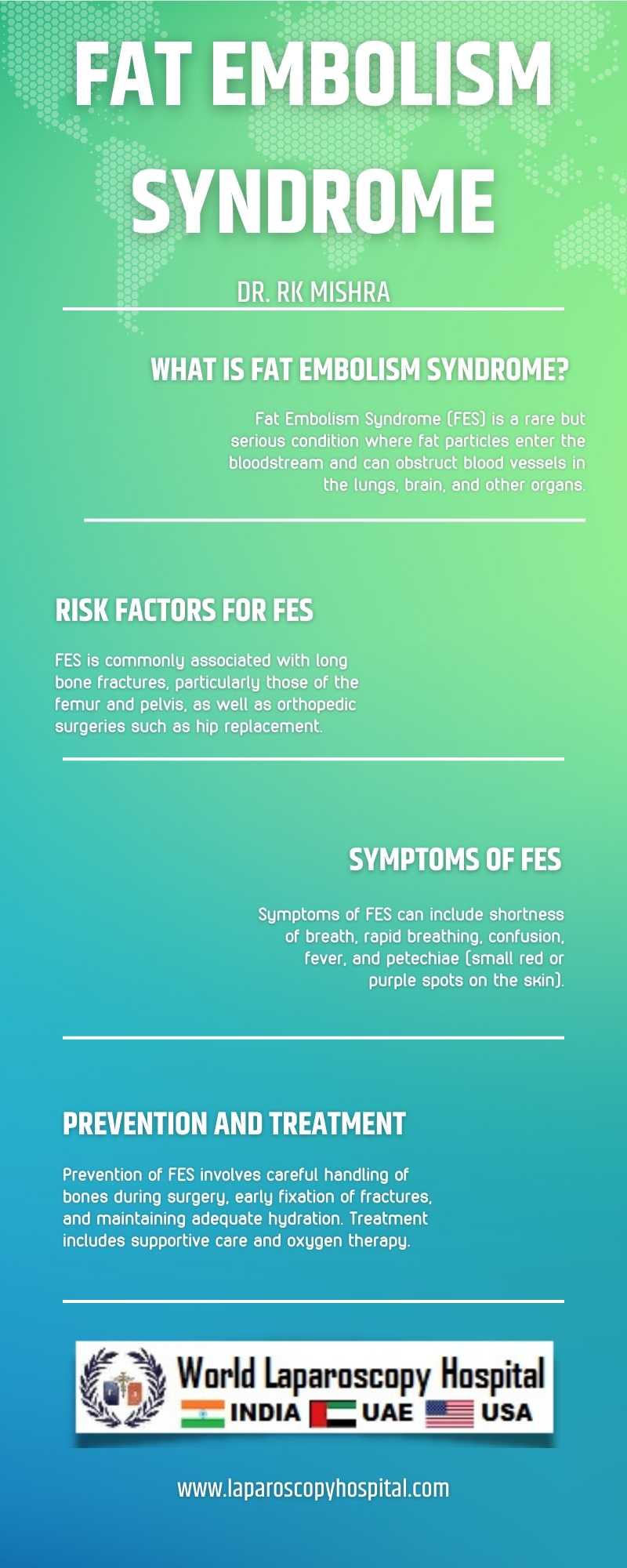Fat Embolism Syndrome (FES) is a rare but potentially life-threatening condition that can occur as a complication of fractures or orthopedic surgeries. It is characterized by the presence of fat globules in the bloodstream, which can obstruct blood vessels and lead to various complications, including respiratory distress, neurological deficits, and even death. Although FES is uncommon, it is important for healthcare providers to be aware of its risk factors, symptoms, and management to ensure early recognition and appropriate treatment.

The pathophysiology of FES involves the release of fat droplets from the bone marrow or adipose tissue into the bloodstream following trauma or surgery. These fat droplets can then travel to the lungs, brain, and other organs, where they can cause tissue damage and inflammation. The exact mechanisms underlying FES are not fully understood, but it is believed to involve a combination of mechanical obstruction, biochemical reactions, and inflammatory responses.
The risk factors for developing FES include long bone fractures, particularly of the femur and pelvis, as well as certain types of orthopedic surgeries, such as total hip replacement and intramedullary nailing. Other risk factors include young age, male gender, and severe trauma. The incidence of FES varies depending on the population studied, with rates ranging from 0.5% to 30% in patients with long bone fractures.
The clinical presentation of FES can vary widely, but typically includes symptoms such as dyspnea, tachypnea, tachycardia, fever, and petechial rash. Neurological symptoms, such as confusion, agitation, and focal deficits, can also occur and are thought to result from cerebral fat emboli. Diagnosis of FES is based on clinical findings, imaging studies (such as chest X-ray and CT scan), and laboratory tests (such as arterial blood gas analysis and coagulation studies).
Management of FES is primarily supportive and focuses on maintaining adequate oxygenation and hemodynamic stability. This may include supplemental oxygen, mechanical ventilation, and fluid resuscitation. In severe cases, medications such as corticosteroids and diuretics may be used to reduce inflammation and improve pulmonary function. Early mobilization and physical therapy are also important to prevent complications such as deep vein thrombosis and pressure ulcers.
Conclusion:
Fat Embolism Syndrome is a rare but serious complication of fractures and orthopedic surgeries. Healthcare providers should be aware of its risk factors, symptoms, and management to ensure early recognition and appropriate treatment. By understanding the pathophysiology of FES and its clinical presentation, healthcare providers can improve outcomes for patients at risk of this potentially life-threatening condition.